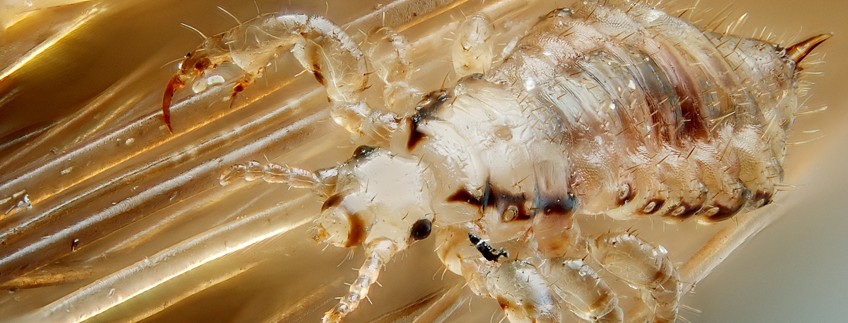
Introduction
Head lice are tiny insects that live on your scalp and are usually found in your hair. They feed on blood from the scalp about five to six times a day, causing an allergic reaction and resulting in itching. The life cycle of the head louse consists of three stages – egg (or nit), nymph and adult. Having head lice can give intense discomfort, but rarely leads to severe complications, as head lice do not spread any diseases.
Signs & Symptoms
Signs and symptoms of head lice include:
- Feeling of something moving around on scalp
- Intense itching
- Small, red bumps on the scalp, neck, and shoulders
- Tiny white specks (nits) on the bottom of each hair that are hard to get off, as the louse attached eggs to the hair with a strong adhesive
Some people do not present with any symptoms, hence it is important to attempt to look for live lice or nits. While head lice can be seen by the naked eye, they can be difficult to detect. Looking at the person’s head under a bright light with a magnifying glass can help. To check for head lice,
- Part the hair all the way down to the scalp while wearing gloves.
- Use a nit comb with teeth spaced 0.2-0.3mm apart to comb through the hair in small sections, starting as close to the scalp as possible
- Section off hair strands after combing.
- Repeat for rest of the head. Focus on crown, top of the neck and ears.
When to Seek Medical Attention
Visit your doctor if:
- You suspect the presence of lice but are unable to find them.
- There are still live lice even after using a full course of over-the-counter treatment.
- There are signs of an infection. These include:
- Redness and swelling of scalp
- Pain
- Discharge with pus
- Swollen lymph nodes in the neck
Lifestyle Modifications
One misconception is that head lice only affect people with dirty hair. However, anyone can get head lice. These insects spread commonly through head to head contact, or possibly through items that can aid in their transmission, such as hair brushes, hats and scarves. While they can move quickly, head lice cannot jump or fly.
Some tips to control the spread of head lice would be to
- Avoid head to head contact with affected people
- Check all family members and treat affected persons accordingly
- Inform the child’s school of the problem
- Avoid sharing items such as combs, clothing or hair pieces
- Wash clothing, bed linens and other items that could be infested with hot water and hot drying cycle.
- Clean floor and furniture that might be infested. However, this might not be necessary as adult lice can only survive without feeding for 1-2 days, and nits will not hatch and die within a week if they are not at human body temperature.
Treatment Options
A common treatment of head lice is Malathion. Malathion is a lice medicine that can kill adult lice and nymphs, but is less effective in killing lice eggs. Hence, reapplication might be required after 7 days in order to thoroughly kill the nymphs that have hatched after the first treatment. It is important to thoroughly coat scalp and hair with the lotion, especially behind ears and neck. Hence, if the patient has long hair, a second bottle of lotion might be required. Follow the manufacturer’s instructions carefully on how to use this medication. Do not use artificial heat after application as malathion is flammable.

